Join More Than 50,000+ Subscribers and get latest camera news and rumors
NEW CAMERA VIDEOS ON YOUTUBE
|
By admin, on January 26th, 2013
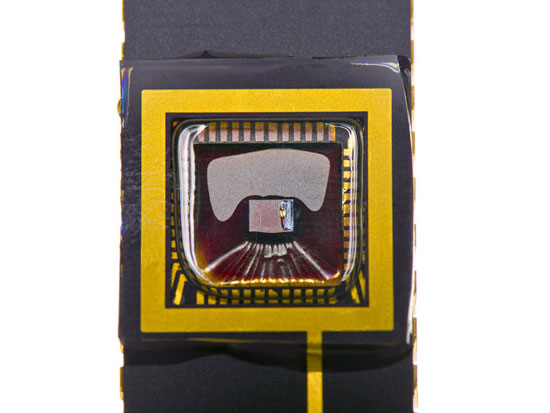 Strong performance: During tests, the organic sensors proved to be up to three times more sensitive to light than conventional CMOS sensors. Photo: A. Heddergott / TUM Strong performance: During tests, the organic sensors proved to be up to three times more sensitive to light than conventional CMOS sensors. Photo: A. Heddergott / TUM
Researchers from Technische Universität München (TUM) have developed a new generation of image sensors that are more sensitive to light than the conventional silicon versions, with the added bonus of being simple and cheap to produce. They consist of electrically conductive plastics, which are sprayed on to the sensor surface in an ultra-thin layer. The chemical composition of the polymer spray coating can be altered so that even the invisible range of the light spectrum can be captured. This opens up interesting new development possibilities for low-cost infrared sensors aimed at compact cameras and smartphones (Nature Communications).
Many compact and cellphone cameras contain silicon-based image sensors produced using CMOS (complementary metal oxide semiconductor) technology. Prof. Paolo Lugli and Dr. Daniela Baierl from TUM have developed a cost-effective process to improve the performance of these CMOS sensors. Their approach revolves around an ultra-thin film made of organic compounds, in other words plastics.
The challenge lay in applying the plastic solution to the surface of the image sensors. The researchers tested spin- and spray-coating methods to apply the plastic in its liquid, solution form as precisely and cost-effectively as possible. They were looking for a smooth plastic film that is no more than a few hundred nanometers thick. Spray-coating was found to be the best method, using either a simple spray gun or a spray robot.
 Ultra-thin: Organic sensors can be applied to CMOS chips over large and small surfaces, as well as to glass or flexible plastic films. Photo: U. Benz / TUM Ultra-thin: Organic sensors can be applied to CMOS chips over large and small surfaces, as well as to glass or flexible plastic films. Photo: U. Benz / TUM
Thin coating with high sensitivity to light
Organic sensors have already proven their worth in tests: They are up to three times more sensitive to light than conventional CMOS sensors, whose electronic components conceal some of the pixels, and therefore the photoactive silicon surface.
Organic sensors can be manufactured without the expensive post-processing step typically required for CMOS sensors, which involves for example applying micro-lenses to increase the amount of captured light. Every part of every single pixel, including the electronics, is sprayed with the liquid polymer solution, giving a surface that is 100 percent light-sensitive. The low noise and high frame rate properties of the organic sensors also make them a good fit for cameras.
Potential for developing low-cost infrared sensors
Another advantage of the plastic sensors is that different chemical compounds can be used to capture different parts of the light spectrum. For example, the PCBM and P3HT polymers are ideal for the detection of visible light. Other organic compounds, like squaraine dyes, are sensitive to light in the near-infrared region.
“By choosing the right organic compounds, we are able to develop new applications that were too costly up until now,” explains Prof. Paolo Lugli, who holds the Chair of Nanoelectronics at TUM. “The future uses of organic infrared sensors include driver assistance systems for night vision and regular compact and cellphone cameras. Yet, the lack of suitable polymers is the main hurdle.”
via – tum.de/nc/en/about-tum/news/press-releases/short/article/30292/
By admin, on January 26th, 2013
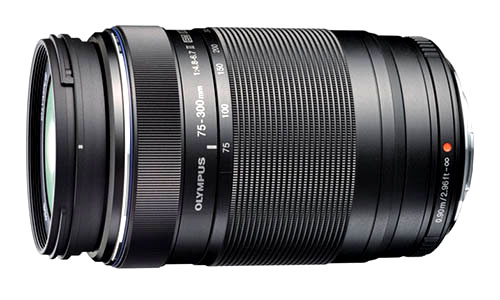
The Upcoming 75-300mm F4.8-6.7 II Olympus M.ZUIKO DIGITAL ED Lens leaked today, available in only black color. the 75-300mm lens is coming with Olympus XZ-10 compact camera.
src-digicame-info
By admin, on January 25th, 2013
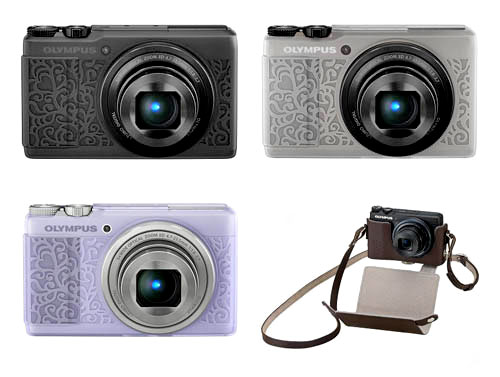
We have the leaked images of upcoming Olympus XZ-10 pro compact camera, The XZ-10, the body is covered with silicon jacket and available in three colors black, lavender and white, expected to be announced in Feb (CP+ Show), no specification available yet.
source | See more Olympus Rumors
By admin, on January 25th, 2013
 Fujifilm X100s features better sensor, Advance image processor and better video mode, See the detailed specification specification comparison review of Fujifilm X100s vs Fujifilm X100. Fujifilm X100s features better sensor, Advance image processor and better video mode, See the detailed specification specification comparison review of Fujifilm X100s vs Fujifilm X100.
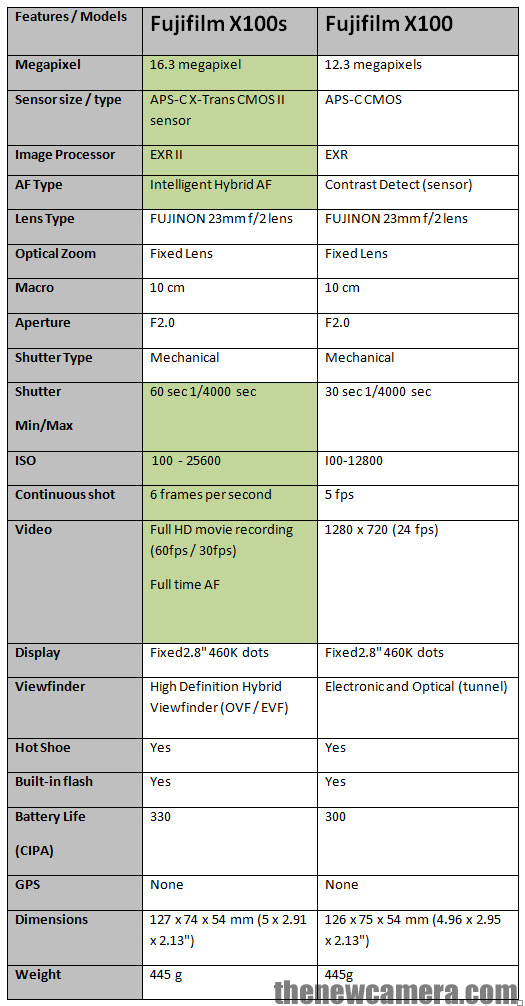
Sensor
The fujifilm features newly developed X-Trans CMOS sensor, the fujifilm X100s sensor is completly redesigned and features Phase AF points within the sensor
No-Optical Low Pass Filter (OLPF) – X-Trans CMOS II incorporates an original color filter array with a highly random pattern, eliminating the need for an optical low-pass filter (OLPF). These filters are used in conventional systems to inhibit moiré at the expense of resolution. The X-Trans CMOS II array lets the sensor capture unfiltered light from the lens, achieving an unprecedented level of resolution.
ISO – The Fujifilm X100s have extended senstivity range of 100 – 25600, X100 is limited to 100
Less Noise – According to fujfilm the test says the fujfilm X100s have more details and approx 30% less noise than Fuji X100.
Due to the new OLPF-less architecture the Image captured by fujifilm X100s have more details compared to fujifilm X100 (when we see it at 100% scale), Take a look at Resolution Comparison and High-Sensitivity Comparison.
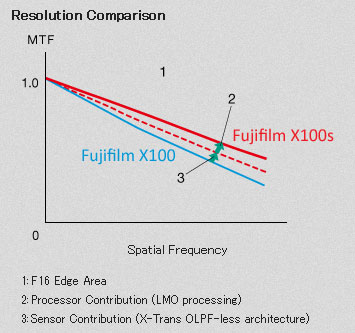
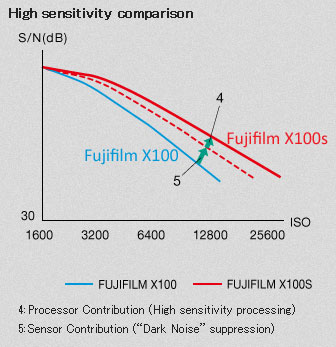
EXR Processor II
The newly developed processor speed-up the X100s to a next level, take a look at stats
- Fast AF performance: Fujifilm X100s features Blazing fast AF speed of 0.08 sec , compared to 0.22 sec for X100
- Quick startup – X100s take only 0.9 sec vs X100 2 sec.
- You get Faster continuous shooting (6 fps vs 5 fps) + Large buffer, Fujifilm X100s offers you 31 frames vs 10 frames of X100 in JPEG Large/Fine mode.
- Less shot-to-shot time in single shot drive mode (0.5 sec vs 0.9 sec)

Auto Focus
The Fujifilm X100s have Phase AF + Contrast AF (in short Hybrid AF), the Fuji X100s offers 0.08 compared to Fuji X100 which offers 0.22 second of AF Speed.
During Movie mode Fujifilm X100s Phase-detect AF effective for movie shooting, AF-S focus mode available (only AF-C and MF on X100).
Video Mode
Fujfilm X100s offers you 1080p 60fps Full HD recording, with 36Mbps bitrate, X100 is limited to 720p 24fps.

other new features
- Auto mode ISO increased to 6400
- 14bit RAW Support
- Minimum shooting distance using OVF reduced to 50cm (X100 have 80cm)
- Minimum focus – normal shooting distance is now 21cm (X100 have 40cm)
- Eye-Fi card support
- bit more battery life
Conclusion
- Fujifilm features better sensor
- No-Optical Low Pass Filter (OLPF)
- Hybrid AF (Phase + Contrast)
- Phase AF during Video Recording
- 30% less noise in images compared to X100
- EXR II processor–> Fast Start-up, AF and Less shot-to-shot time
- Auto mode ISO increased to 6400
- Expandable ISO increased to 25600
- 14 bit RAW support
- Eye-Fi Card Support
We highly recommend you to buy Fuji X100s , no reason to buy X100.
Buy Fujifilm X100S from Amazon || Buy Fujifilm X100S from B&H
By admin, on January 24th, 2013
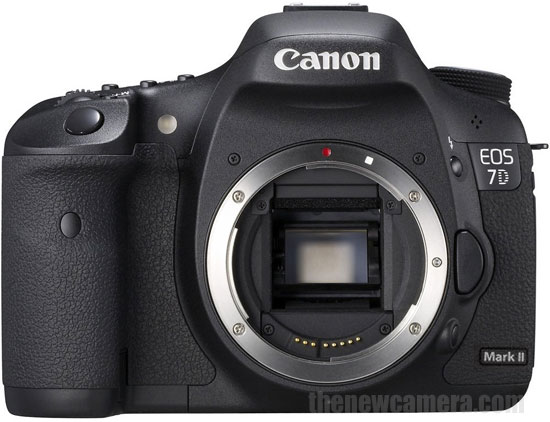
Canon 7D successor [7D Mark II] may not appear soon, dc.watch (japanese magzine) interviewd Canon managing director Tian Rong, read the main points of the interview translated via google
- Last year was the Year of top reinforcement in each product category, the Prestige model. I believe that the technologies developed in the Prestige model per each genre, increasing the sophistication of the feature, this year, we will try to fall into the lower models.
- purely to pursue while maintaining high-quality and high-sensitivity performance EOS has, how far can be reduced. This is the theme of the first one of the first (EOS M). However, I think the future will continue to expand because variation in the mirror-less machine, various types of product will come out.
- (The successor to the EOS 7D that does not appear immediately) is per premonition. Although the development of the successor of course, it is “the product innovations put some kind.” Instead of that issue as a successor to the product that you spec up a little, it will be what has evolved towards a new area.However, it is not the story of the day so far.
As far as I can understand the Canon 7D successor (7D Mark II) is not coming at CP+ show, but sure we will see a major change in sensor and core specification, if you have better translation write us on comment box / or email us at contact[at]thenewcamera.com
See the full translation – dc.watch.impress.co.jp
Via – digicame-info.com/2013/01/eos-7d-12.html
By admin, on January 23rd, 2013
 Sony today announce two new lens, the first lens is 20mm F2.8 Pancake lens and other one is 18-200mm F3.5-6.3 Power Zoom Lens, the 18-200mm lens features built-in Optical SteadyShot™, the power zoom lens also a comfortably positioned zoom lever that works with a switch on the lens barrel, allowing zoom speed to be selected in three different steps – from slow, beautiful shifts in perspective to dramatic crash-zoom effects. Zoom can also be controlled directly from compatible NEX-VG900, NEX-VG30 and NEX-FS700 (requires firmware update) video cameras. Sony today announce two new lens, the first lens is 20mm F2.8 Pancake lens and other one is 18-200mm F3.5-6.3 Power Zoom Lens, the 18-200mm lens features built-in Optical SteadyShot™, the power zoom lens also a comfortably positioned zoom lever that works with a switch on the lens barrel, allowing zoom speed to be selected in three different steps – from slow, beautiful shifts in perspective to dramatic crash-zoom effects. Zoom can also be controlled directly from compatible NEX-VG900, NEX-VG30 and NEX-FS700 (requires firmware update) video cameras.
The new E 20mm F2.8 (SEL20F28) wide-angle prime lens will be available this April for about $350.
The new E PZ18-200mm F3.5-6.3 OSS (SELP18200) motorized telezoom lens will be available this March for about $1200.
More details at press release below
Continue reading Sony Announces 20mm F2.8 Pancake and 18-200mm Zoom Lens
By admin, on January 23rd, 2013

Kodak announced S1 Mirrorless M4/3 camera [see more here]
The news coming from a Australia website photocounter, they have done a extensive research into the mysterious company that purchased the license to sell Kodak branded digital cameras. The research shows the JK Imaging and General Imaging (division of General Electric) have the exact same address in Gardena, California.

|
KEEP THIS BLOG ALIVE - Support New Camera Buy Canon Lenses, Buy Music CD or Digital Camera at amazon it helps this site, and you do not pay anything extra, it is just a way to help support this site.

|
 Strong performance: During tests, the organic sensors proved to be up to three times more sensitive to light than conventional CMOS sensors. Photo: A. Heddergott / TUM
Strong performance: During tests, the organic sensors proved to be up to three times more sensitive to light than conventional CMOS sensors. Photo: A. Heddergott / TUM Ultra-thin: Organic sensors can be applied to CMOS chips over large and small surfaces, as well as to glass or flexible plastic films. Photo: U. Benz / TUM
Ultra-thin: Organic sensors can be applied to CMOS chips over large and small surfaces, as well as to glass or flexible plastic films. Photo: U. Benz / TUM
















